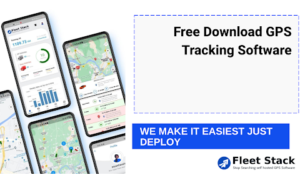The year 2024 stands as a juncture marked by significant advancements, primarily propelled by the convergence of Radio-Frequency Identification (RFID) and the Internet of Things (IoT). This synthesis of technologies is not merely conceptual but an instrumental force in reshaping the fundamental paradigms of asset management.
Businesses, irrespective of industry, grapple with the imperative of efficiently tracking and managing their assets, whether within expansive warehouses, healthcare facilities, or intricate supply chains. At the heart of this operational challenge lies the need for precision and real-time visibility. Herein, the tandem deployment of RFID inventory tracking software and IoT emerges as a transformative solution.
RFID serves as a sophisticated identifier, like a digital signature for each asset, streamlining the identification and tracking processes. Concurrently, IoT, functioning as a network of interconnected devices operating through the internet, establishes an environment conducive to seamless data flow.
This blog aims to dissect the intricacies of RFID and IoT, shedding light on their pivotal roles as catalysts for transformation in asset tracking. From unraveling the foundational principles of RFID to delving into the real-time capabilities of IoT, our journey navigates the contours of a revolution poised to redefine asset tracking in the unfolding year of 2024.
The Role of RFID in Asset Tracking
In asset tracking, RFID emerges as a linchpin technology, offering a streamlined approach to identification and monitoring. RFID, or Radio-Frequency Identification, operates like a digital fingerprint for each asset. Small RFID tags, equipped with unique identifiers, are affixed to items. These tags communicate with RFID readers, enabling businesses to locate and track assets in real-time precisely.
The significance lies in the accuracy and efficiency brought to asset management. Unlike traditional barcode systems, RFID doesn’t require a direct line of sight for scanning. This means that assets can be identified even if they are within packages or hidden from view. The result is a swift and error-resistant method for tracking assets across diverse operational landscapes.
Industries across the spectrum, from retail to manufacturing, have witnessed tangible benefits from the implementation of RFID inventory tracking software. The ability to quickly locate, identify, and manage assets enhances operational efficiency and mitigates the risk of errors commonly associated with manual tracking methods.
Embracing IoT for Enhanced Asset Visibility
The Internet of Things (IoT) serves as a powerful ally in the quest for enhanced asset visibility. Unlike RFID, which primarily focuses on identification, IoT extends its capabilities to real-time monitoring and data analytics. In an IoT ecosystem, assets are embedded with sensors and connected to a network, allowing continuous data exchange.
This interconnectedness brings a new dimension to asset tracking by providing constant information. In real-time, imagine assets transmitting their status, location, and usage data. IoT facilitates this seamless communication, enabling businesses to make informed decisions based on up-to-the-minute insights.
The benefits of embracing IoT in asset tracking are multifaceted. Predictive maintenance becomes a reality as sensors relay information about an asset’s condition, allowing for proactive interventions. Additionally, data analytics driven by IoT empower businesses to optimize workflows, minimize downtime, and enhance overall operational efficiency.
The Relation between RFID and IoT
While RFID and IoT each offer distinctive advantages, their relation unlocks asset-tracking sophistication that surpasses individual capabilities. RFID excels in precise identification, while IoT adds the dimension of continuous data flow and real-time insights.
In a harmonious integration, RFID becomes the eyes on the ground, capturing accurate data about asset location and status. This data is seamlessly transmitted through the IoT network, creating a comprehensive and dynamic asset tracking software. The result is a powerful amalgamation where RFID’s precision converges with IoT’s analytical prowess.
This collaboration is particularly potent in scenarios where assets require identification and constant monitoring. Industries such as logistics, healthcare, and manufacturing stand to gain significantly from the synchronized capabilities of RFID and IoT, ushering in an era of heightened efficiency and operational intelligence.
Advancements in 2024
As we step into 2024, the landscape of asset tracking witnesses a culmination of technological advancements that propel efficiency to unprecedented heights. RFID and IoT, already formidable in their individual capacities, evolve further to offer enhanced precision, faster data processing, and increased scalability. Integrating artificial intelligence and machine learning amplifies predictive analytics, ushering in an era of proactive asset management.
Cutting-edge developments in 2024 include more robust and miniature RFID tags, extended battery life for IoT sensors, and improved connectivity protocols. These advancements collectively contribute to a more resilient and responsive asset-tracking software or system catering to the evolving needs of diverse industries.
Industries Revolutionizing Asset Tracking
- Logistics and Supply Chain Management: Real-time tracking and monitoring streamline logistics operations, reducing delays and optimizing supply chain efficiency.
- Healthcare and Pharmaceuticals: Precision in tracking medical equipment, pharmaceuticals, and patient records ensures a seamless healthcare delivery system, with benefits ranging from improved patient care to regulatory compliance.
- Manufacturing and Warehouse Management: Enhanced visibility into the production process and inventory management leads to minimized downtime, increased productivity, and better resource allocation.
Conclusion
In asset tracking, the amalgamation of RFID and IoT in 2024 paints a picture of unprecedented efficiency and precision. This transformative relation redefines how businesses manage their assets and sets the stage for a new era of operational intelligence.
As we navigate this era of technological evolution, businesses across various sectors are poised to reap the rewards of streamlined processes, reduced errors, and enhanced decision-making capabilities. The journey towards optimizing asset tracking is not just a technological pursuit; it’s a strategic imperative for those looking to stay at the forefront of innovation.
Explore the future of asset tracking with RFID and IoT – where precision meets operational intelligence. Learn how these technologies can elevate your business operations.
































